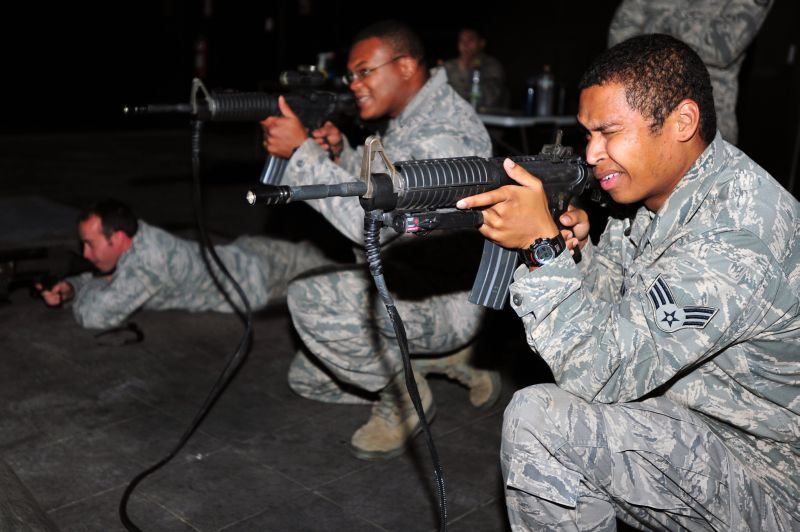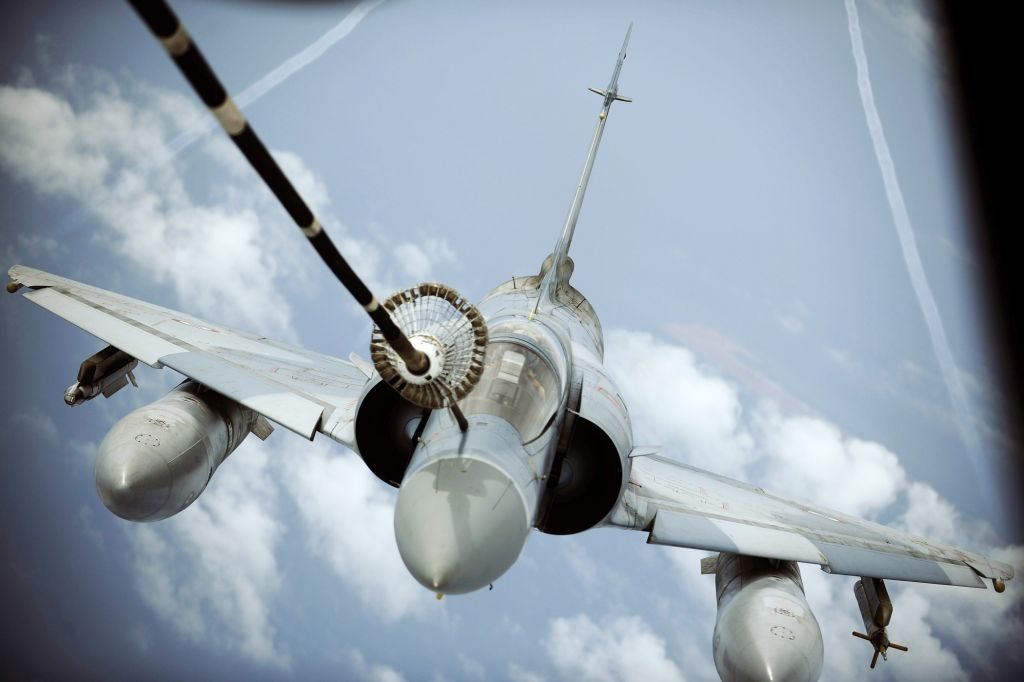The 51st Security Forces Squadron offers a different way to engage in a shoot or no-shoot scenario at Osan Air Base, Republic of Korea.
The Engagement Skills Trainer 2000 is a virtual firearms simulator that uses life-like, life-size weapons to practice marksmanship skills and engage in real-world type scenarios. The shoot or no-shoot scenarios allow participants to verbally engage for practice in deescalating the situation, explained Airman 1st Class Stephen Wood, 51st Security Forces Squadron Combat Readiness Course instructor.
“A shoot, no-shoot scenario is a scenario in which you arrive on scene and you have to make the decision of what level of force is necessary per the use of force regulations,” Wood said. “Depending on what actions the suspect in the simulator takes the security forces members decides whether or not he is authorized to shoot or not, then the EST operator will go over the scenario with the security forces member and have them justify why the used the level of force they chose and how they handled the scenario.”
The trainer is an alternative to the actual range and gives a life-like approach to different scenarios such as domestic disputes and base exchange hold ups.
“In all the scenarios you are dealing with a person or people who are disgruntled and the security forces member is supposed to use verbal judo to get an understanding of the situation at hand and deescalate it; however, the EST 2000 operator can choose to escalate the situation at which time the security forces member needs to respond accordingly,” Wood said.
The trainer incorporates several weapons such as the M-240 machine gun, M-4 rifle and M-9 pistol for virtual training scenarios that allow Airmen to differentiate between hostile and non-hostile forces in a combat situation. It also allows security forces Airmen to satisfy training requirements for use-of-force and alleviates ammunition costs on base, said Staff Sgt. Timothy Dent, 51st SFS CRC instructor.
The trainer is not used exclusively by security forces, however. A group of five 51st Civil Engineer Squadron Explosive Ordinance Disposal technicians worked with the EST 2000 for exposure to situations they may encounter when in the field.
“This lets the guys get out of the shop to blow off some steam and have some fun,” said Tech. Sgt. Jeremy Miller, 51st Civil Engineer Squadron Explosive Ordinance Disposal craftsman, after a training session with the EST 2000. “We’re honing in on some skills. It’s not very often we get a chance to shoot, so this gives us an excellent opportunity to do some joint training with the security forces team.”
Although the virtual range may have different effects than shooting with live ammunition, there is still a learning experience to be had here, he said.
The EST 2000 is a controlled, more comfortable alternative to the actual range, Miller explained. There are loud noises and a bit of recoil with the weapons to add realism.
“There are a lot of advantages to the EST 2000,” Wood said. “You do not need any live rounds, so if you are utilizing the system for marksmanship practice there is no need for loading rounds into magazines, no major safety considerations, no cleanup of brass and no cost for ammunition.
Also, the EST 2000 allows you to get realistic training in handling situations as they develop and escalate or deescalate. Since it simulates real people and real scenarios it is a huge step up from just shooting at paper targets. It gives it more of a life-like feel, and with the people on the simulator going down when you shoot them it puts things a little more into perspective.”
There is still a degree of separation, Wood explained. Even though the simulator is life-like, it is not real.
“Studies have been shown that it’s harder for people to pull the trigger when they are used to firing at a circular white target or green silhouette target as opposed to a life-like target,” said Dent. “The moving target makes them better prepared when the time comes.”











